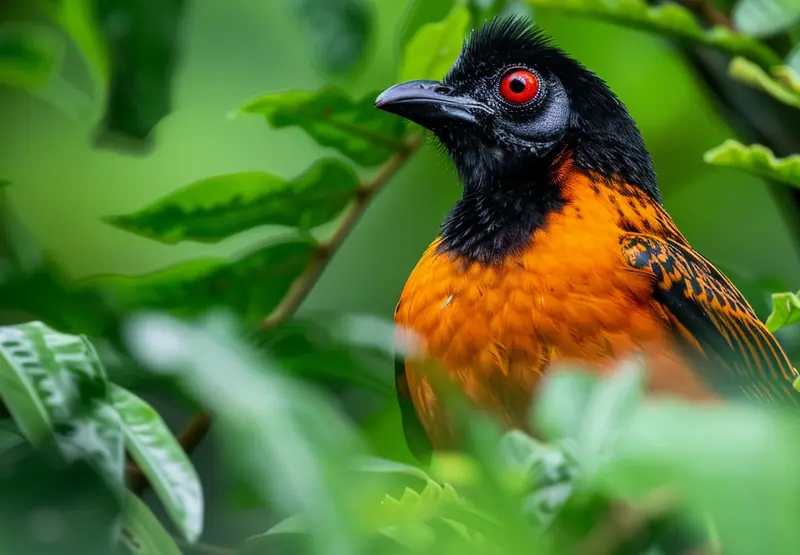These small birds may look incredibly cute, with their black heads and wings contrasting against their bright orange bodies. However, few realize that beneath this charming exterior lies a true killer. Don’t mess with the crested pitohui! A team led by researcher and bird expert Jack Dumbacher was searching the forests of New Guinea for the elusive bird of paradise, the Raggiana, when they unexpectedly stumbled upon a flock of crested pitohuis. Many of these birds had become entangled in the ornithologists’ nets, prompting the team to quickly free the trapped creatures. During the rescue, the crested pitohuis bit the scientists. Lacking band-aids, the researchers treated their wounds with their own saliva, leading to some rather strange occurrences.
The scientists noticed that after touching the crested pitohui and being bitten, their mouths began to burn, tingle, and even go numb. For some expedition members, the numbness lasted until morning. When the researchers shared this incident with local guides, they were not surprised. According to the guides, these birds are considered “garbage” and are not even eaten. However, it’s best to keep a safe distance from them, even though the locals are skeptical about the pitohui’s ability to kill people. Intrigued by what they heard, the ornithologists began investigating these birds.

Ultimately, their research revealed that the birds’ feathers contain a type of toxin. This toxin was getting onto the scientists’ hands and into their mouths, causing them to suffer. It turns out to be a steroidal alkaloid neurotoxin that poses a serious danger, as reported by IFJScience. “Initially, it causes tingling and numbness. In high doses, it can lead to paralysis, cardiac arrest, and death. It is one of the most toxic natural substances known,” noted Jack Dumbacher.
So, where does the crested pitohui get its poison? The team discovered that the bird’s toxicity is directly linked to its diet. Crested pitohuis feed on the toxic beetle Choresine pulchra, which is endemic to New Guinea. Also known as the nanisani beetle, it serves as a direct source of batrachotoxins for the region’s fauna. As a result, neurotoxins accumulate in the birds’ tissues, posing a lethal threat, particularly to predatory reptiles that have a fondness for bird eggs.

